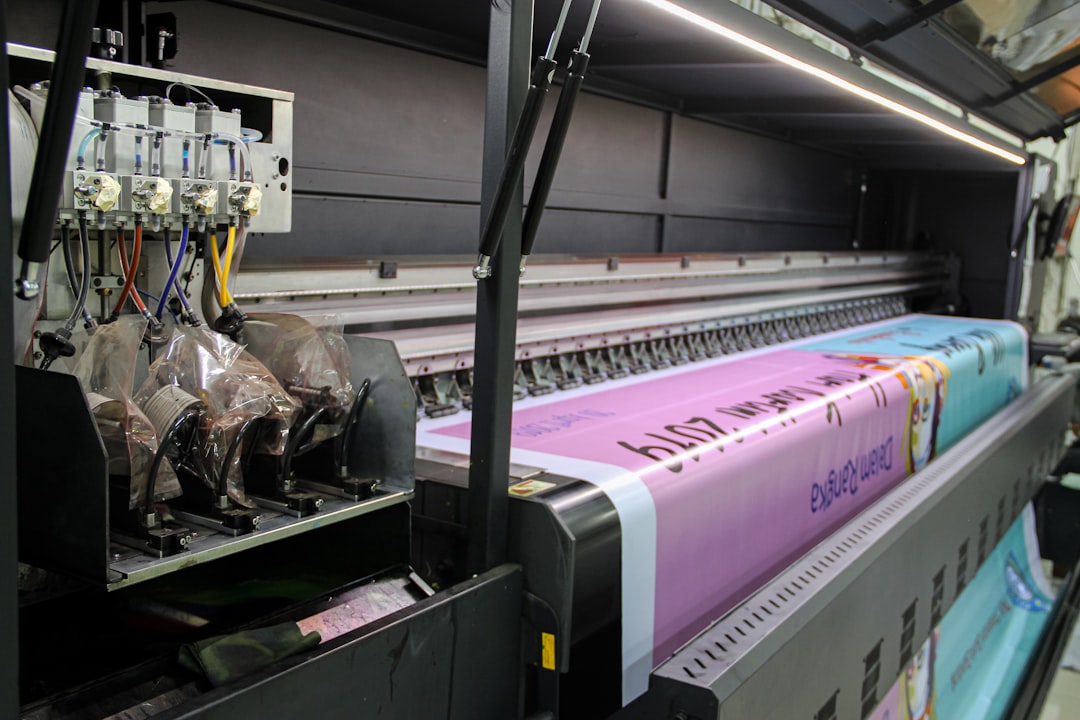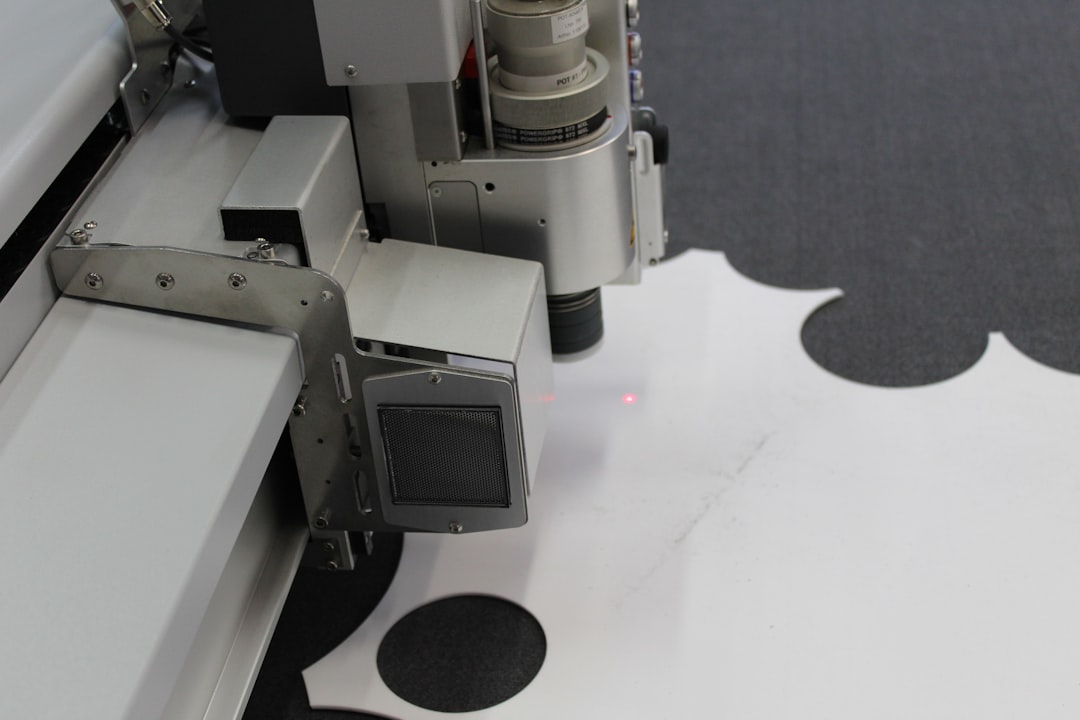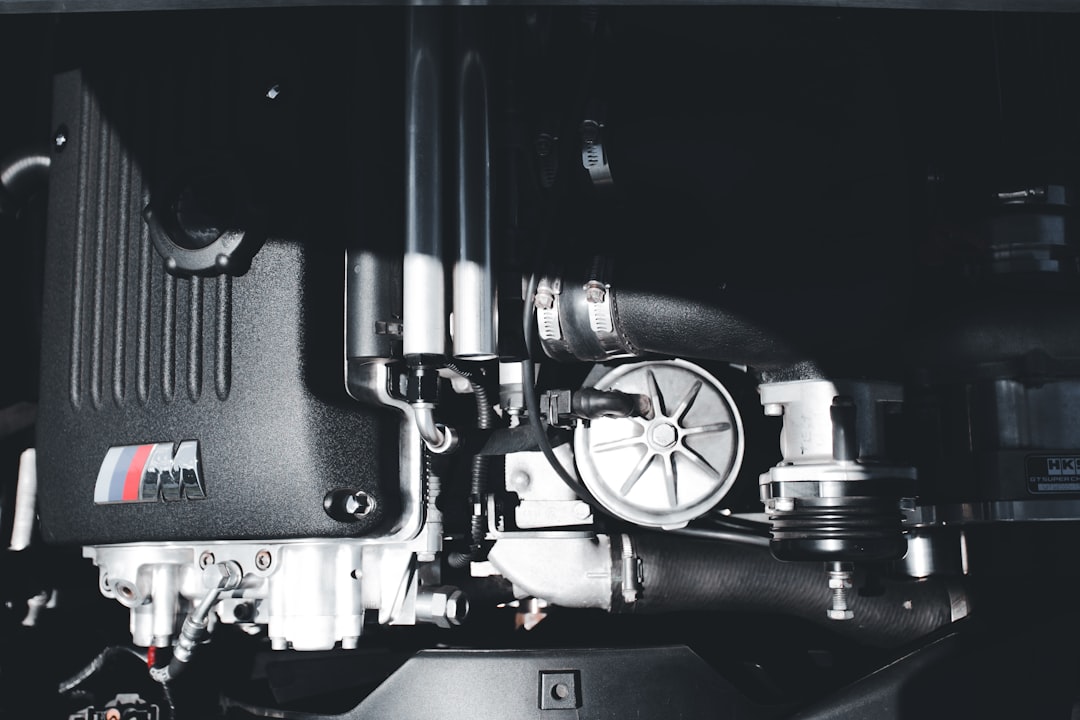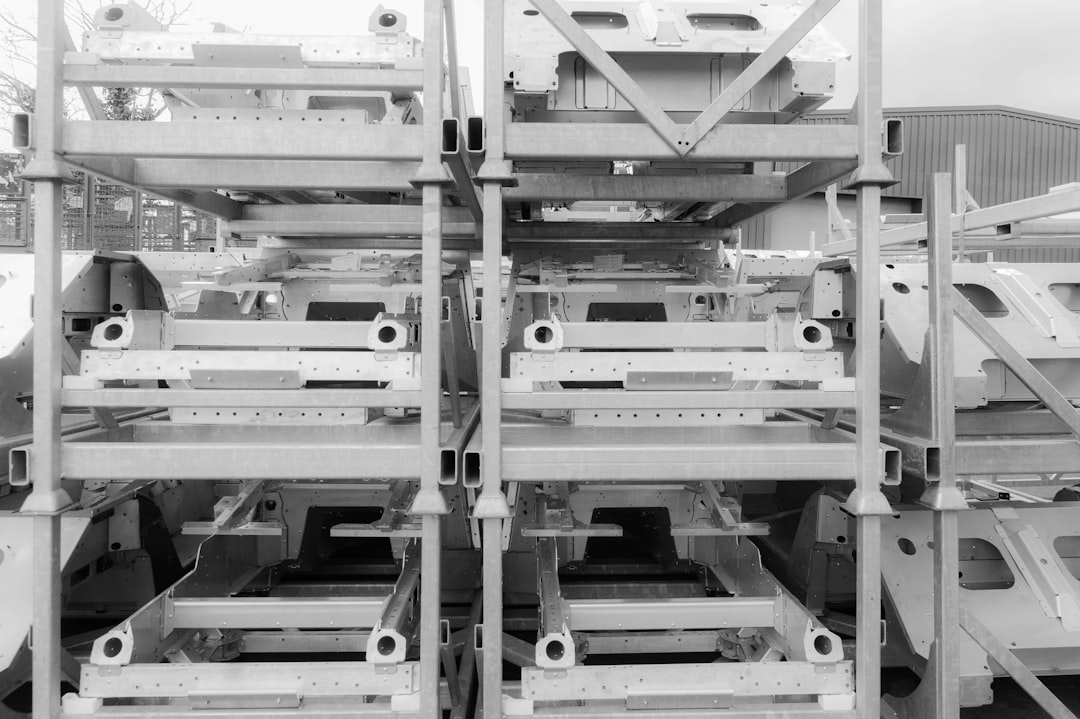

Engage prospects with a scan and streamline customer engagement with FREE QR code marketing tools by Sona – no strings attached!
Create a Free QR CodeFree consultation

No commitment

Engage prospects with a scan and streamline customer engagement with FREE QR code marketing tools by Sona – no strings attached!
Create a Free QR CodeFree consultation

No commitment
The print industry is undergoing a profound digital transformation, with printing equipment suppliers standing at the forefront. Yet the transition from analog to data-driven engagement often stalls at the connection between physical assets and digital outcomes. Customers still interact with printed catalogs, brochures, and in-store signage in print marketing, but funneling those moments of attention into measurable results remains a challenge, especially when intent-rich opportunities are missed simply because visitors go untracked or anonymous traffic slips through the cracks.
For printing equipment suppliers, QR codes have quickly evolved from simple shortcuts into strategic gateways, as covered in Sona QR’s marketing guide. They bridge the crucial gap between printed materials and online journeys, allowing businesses to deliver detailed product information, capture leads before they disappear, and trigger targeted follow-up without disrupting the customer experience. No app downloads, no complex integrations, just one scan to unlock immediate engagement, even when prospects never fill out a form.
Let’s explore how printing equipment suppliers can harness QR codes to modernize workflows, reduce missed opportunities, and build a more complete picture of every customer interaction, all while adapting to the demands of today’s fast-moving buyers.

QR codes now sit at the intersection of analog and digital, turning every printed touchpoint into a measurable interaction. For many printing equipment suppliers, outdated manual processes mean valuable prospect interest goes untracked, especially if a catalog reader does not take the extra step of submitting an inquiry. QR-enabled journeys remove that friction and invite action at the precise moment of interest, whether a prospect is reading a brochure in a showroom or pausing at a demo station on a trade show floor.
To achieve faster customer conversions and increased engagement, modernize your approach to print-driven marketing and sales with a focus on trackable scans, clear calls to action, and integrated follow-up. When built correctly, QR campaigns enable better attribution, richer segmentation, and more efficient workflows across sales, service, and marketing.
As a result, printing equipment suppliers address the persistent challenge of losing track of high-value prospects while building data-driven workflows for greater speed and efficiency. With end-to-end QR management, every campaign becomes smarter with each scan, and every scan contributes to a fuller picture of account-level intent.

Every year, printing equipment suppliers lose potential revenue due to missed engagement signals. Prospects flip through catalogs, snap photos of machines, or browse in a booth, then leave without identifying themselves. QR codes provide a unique solution to this challenge by giving buyers a fast, familiar way to act, while giving suppliers measurable, attributable data that feeds sales and marketing systems.
QR codes also align perfectly with how buyers research industrial-grade equipment. They want detailed specs, transparent pricing models, and proof of performance, but they do not want to be forced into a lengthy form before they can explore. A clean, scannable path gives them agency and speed, which shortens the journey from curiosity to conversation.
This technology answers industry vulnerabilities by removing the black box between physical marketing and digital engagement. It enables printing equipment suppliers to reduce manual follow-up, improve campaign measurement, and capture value from every customer moment across the buyer journey.

Printing equipment suppliers benefit from a variety of QR formats, each designed for specific workflows and moments of need. Choosing the right format ensures that the action initiated by a scan aligns with the intent of the buyer and the context of the touchpoint.
Focus on formats that accelerate evaluation, facilitate contact, and enable service. For big-ticket decisions such as presses, finishers, large-format printers, and binding machines, buyers want clarity on specs, configurations, and post-sale support. For serialized assets, variable QR printing can also be useful. The following formats shine in those situations.
With dynamic QR management, every format can be tracked, segmented, and updated. Tools like Sona QR streamline this by generating codes, managing destinations at scale, and connecting scan data to CRM and analytics systems.

The challenge for printing equipment suppliers lies in surfacing the right signals at the right stage of the buyer journey, often when intent is highest but traditional systems cannot see it. QR codes create leverage by prompting action in the moments where attention is concentrated and decisions are being shaped.
Look for placements where a single scan can collapse multiple steps in the journey, for example, taking a user from brochure to quote request or from demo unit to calendar scheduling. These are the places where small improvements create disproportionate gains in leads and revenue.
Focused QR placement ensures contextually relevant engagement and addresses the persistent pain of missed or invisible conversion moments. It also provides a foundation for consistent attribution and continuous optimization.

Printing equipment suppliers face specific hurdles in turning high product interest into measurable outcomes. QR codes align with common interactions and can be tuned for the outcomes that matter most, such as booked demos, qualified quotes, faster support, and renewals.
Below are three practical use cases that convert passive attention into owned digital engagement and pipeline.
These use cases shorten the distance between discovery and decision, while giving suppliers the data required to attribute outcomes and plan follow-up with confidence.
A recurring source of frustration for printing equipment suppliers is the inability to retarget high-fit prospects who engage with print but never self-identify. Each QR scan is a signal containing intent, context, and timing. When you deploy unique codes across journeys and media, you can segment audiences automatically and connect those segments to CRM and ad platforms for precise follow-up; for step-by-step tactics, see Sona’s retargeting playbook.
Treat scans as the starting point for lifecycle marketing. Use the content consumed and the context of the scan to infer where the buyer is in the funnel and what they need next. Then automate appropriate outreach to keep momentum.
By orchestrating segments around real-world behavior, your retargeting moves from broad assumptions to precise relevance. The result is higher response rates, shorter sales cycles, and better allocation of budget.
Print assets too often operate in silos, with no way to attribute impact. QR codes serve as the missing link, closing gaps and aligning touchpoints for complete measurement. For a deeper view on cross-channel measurement, see Sona on offline attribution. When integrated across channels, they power real-time engagement and unify data that would otherwise remain fragmented.
For printing equipment suppliers, the most effective strategy is to embed QR codes wherever buyers move between physical and digital research. Pair each code with a benefit-led CTA and a destination that matches the moment.
QR codes serve as the offline onramp to your digital marketing engine. With a centralized platform like Sona QR, you can manage codes at scale, monitor performance, and sync scan data with your CRM and ad platforms, turning every physical touchpoint into a coordinated campaign asset.
Executing a QR campaign is not just about placing a code on a page. It is about aligning a clear outcome, an appropriate destination, and a measurement plan that proves impact. The following checklist will help you move from idea to performance with fewer surprises and better results.
Use it to standardize your internal process across marketing, sales, and service teams. The more consistent your execution becomes, the faster you will learn and the more efficiently you will scale.
Clarify what business outcome you want the QR campaign to drive. Common goals include booked demos from trade show attendees, increased quote requests from catalog readers, or faster warranty registrations for new installations. Define a single primary goal per code so you can evaluate performance cleanly.
Translate that goal into a specific user action and destination. For instance, if the goal is to increase demo bookings, send scanners to a prefilled scheduling page rather than a general brochure. If the goal is to accelerate post-sale onboarding, link to a first-week setup guide or a service booking form.
Select between static and dynamic QR codes based on your need for tracking and flexibility. Static codes point to a fixed destination and are best for evergreen assets that rarely change. Dynamic codes route through a management platform, allowing you to change destinations, add UTM parameters, and capture analytics without reprinting. Start creating QR codes for free at Sona QR.
For most marketing and sales use cases, dynamic codes are the right choice. They allow you to iterate quickly, run A/B tests, and maintain control when circumstances change, such as updated pricing, new product launches, or revised offers.
Design your code and surrounding creative with human behavior in mind. The QR code should be large enough for the expected scan distance, surrounded by sufficient white space, and accompanied by a clear CTA that tells users what they will get by scanning. Include your brand colors or logo in the code frame if your generator supports it, while maintaining contrast for readability.
Testing is critical. Check scans from multiple devices, distances, and lighting conditions. Validate that the destination loads quickly, is mobile-friendly, and delivers on the CTA promise. Nothing hurts conversion like a slow page or a confusing form.
Roll out the campaign on the channels that intersect most naturally with your target audience. For printing equipment suppliers, top performers often include booth signage, showroom placards, catalogs, direct mail, packaging, and invoices. Align each placement with an appropriate destination and CTA based on context.
Use unique codes per placement so you can compare performance across channels. This will reveal where buyers are most willing to engage and which creatives or surfaces need refinement. For production, consider professional QR printing services to ensure correct sizing and placement.
Measure scan volume, conversion rates, and downstream outcomes such as opportunities created or service bookings completed. Review performance by placement, creative, and audience segment. Use analytics to spot bottlenecks, then test improvements such as shorter forms, stronger CTAs, or faster-loading destinations.
Integrate your QR data with your CRM so that scans become actionable signals for sales and service. With Sona QR, you can trigger workflows, score leads based on behavior, and attribute revenue back to specific codes and assets.
For printing equipment suppliers, quantifying print marketing ROI has long been a source of friction. Traditional approaches could show distribution, not engagement, and even when engagement happened, it was hard to connect it to pipeline. QR analytics change that by turning every physical asset into a measurable touchpoint with clear links to outcomes.
Advanced tracking also closes the loop between marketing and sales. When scan data flows into your CRM with context such as product interest, location, and time, reps can prioritize outreach, tailor conversations, and avoid cold calls that miss the mark. Marketing can then attribute spend to pipeline and revenue, improving planning and budget allocation.
By directly connecting offline scan behavior with pipeline creation, printing equipment suppliers gain clarity on what works and where opportunities have historically slipped through unnoticed. Analytics transform QR from a convenience feature into a core component of performance marketing.
Scaling QR success requires discipline, creativity, and alignment across teams. The following best practices help you increase scan rates, capture richer data, and convert engagement into measurable outcomes while staying true to how buyers want to interact.
Prioritize the placements and workflows most common in the industry, such as trade shows, catalogs, demo floors, and post-sale service touchpoints. Then build repeatable plays you can apply to each product line and market segment.
Emphasizing these strategies ensures that every scan not only registers intent, but also advances the journey and creates measurable business value. Over time, your QR program becomes a reliable lever for demand generation, customer success, and account growth.
For printing equipment suppliers, the gap between offline brand presence and actionable digital engagement has never been more critical to address. QR codes, when deployed strategically and supported by solid analytics, give suppliers the tools to turn every print asset into both a source of revenue and a repository of insight. Leaders are already using scans to capture previously invisible opportunities, reduce churn through better service pathways, and personalize outreach based on what each buyer has actually explored.
QR codes redefine print marketing for suppliers by converting attention into action and action into attribution. When you close the loop on anonymous interactions and ensure every scan contributes to a richer understanding of buyer needs, you can build smarter journeys, measure what matters, and invest with confidence. With a centralized platform like Sona QR, you can generate codes at scale, update destinations without reprinting, and connect scans to revenue across your stack. For attribution strategy beyond scans, see Sona on revenue attribution. The result is a modern, connected growth engine where every piece of print becomes a reliable source of opportunity and measurable business value.
QR codes have transformed the printing equipment suppliers industry from static catalogs and brochures into dynamic, measurable growth channels. Whether it’s streamlining product information access, enhancing customer support, or enabling seamless ordering processes, QR codes replace traditional methods with instant, mobile-friendly interactions that capture real-time engagement data—turning every printed asset into a powerful sales and service tool. Imagine your customers effortlessly accessing detailed specs, tutorials, or exclusive offers with a simple scan, boosting satisfaction and accelerating purchase decisions.
With Sona QR, you can quickly create dynamic, trackable QR codes that update instantly without the need to reprint materials. Connect every scan directly to actionable insights to optimize marketing efforts, improve customer acquisition, and strengthen client relationships. No wasted print runs, no missed leads—just smarter, more profitable outcomes.
Start for free with Sona QR today and turn every scan into a gateway for growth, loyalty, and lasting success in the printing equipment supply industry.
QR codes help printing equipment suppliers bridge offline print materials with online engagement by enabling trackable interactions, reducing friction for buyers, providing behavioral insights, and allowing content updates without reprinting.
Suppliers select QR code formats based on buyer intent and context, using web links for product details, vCards for contact sharing, forms for demo bookings, PDFs for technical info, and event registration codes to match specific workflows.
Effective placements include showrooms, demo floors, brochures, catalogs, product packaging, equipment support points, and direct mailers, focusing on high-intent surfaces where buyers naturally interact.
QR codes enable trackable scans tied to CRM data, facilitate faster demo bookings and quote requests, allow dynamic content updates, and support automated follow-up workflows for richer segmentation and attribution.
Steps include identifying a clear campaign goal, selecting static or dynamic QR codes, designing and testing for scannability, deploying codes across relevant channels, and tracking performance to optimize results.
They track scan data with context such as time and location, measure post-scan behaviors like demo bookings, sync data with CRM systems, and attribute revenue by linking scans to sales opportunities.
The article does not specify types of printing equipment for small businesses.
The article highlights the digital transformation in printing equipment through the adoption of QR codes that connect physical print assets to measurable digital engagement.
The article does not provide information on pricing strategies or how to get the best price from printing equipment suppliers.
They create unique QR codes per buyer journey stage, tag audiences based on scan behaviors, segment by context like location and timing, and sync data with CRM and advertising platforms for precise retargeting.
Use Sona QR's trackable codes to improve customer acquisition and engagement today.
Create Your FREE Trackable QR Code in SecondsJoin results-focused teams combining Sona Platform automation with advanced Google Ads strategies to scale lead generation

Connect your existing CRM

Free Account Enrichment

No setup fees
No commitment required

Free consultation

Get a custom Google Ads roadmap for your business






Launch campaigns that generate qualified leads in 30 days or less.
